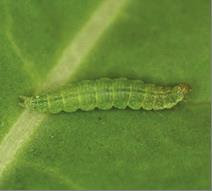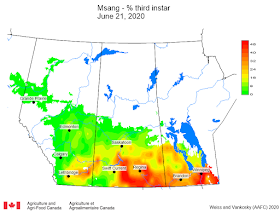Sugar Beets cc by 2.0 Ulrike Leone
Note:
This year, we're doing things a bit differently for our Insect of the Week. Instead of focussing on a single insect (pest or natural enemy), we're looking at it from a crop perspective. Each week, we'll pick a crop and list the insects that attack it along with additional helpful information. The insect list is based on the information found in the Field Crop and Forage Pests and their Natural Enemies in Western Canada: Identification and Management field guide. The field guide offers information describing lifecycle, damage description, monitoring/scouting strategies, economic thresholds (where available) and control options) for each economic pest.
In addition to an Insect of the Week, we'll also feature one of the entomologists that helps support the PPMN, either directly or indirectly.







































